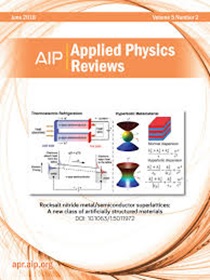Degradation factors of commercial lithium-ion batteries
IF 11.6
1区 物理与天体物理
Q1 PHYSICS, APPLIED
引用次数: 0
Abstract
Lithium-ion batteries (LiBs) represent a state-of-the-art electrochemical energy storage technology, enabling applications from portable electronics and electric transportation to large-scale grid energy storage systems. Despite their widespread adoption, LiBs face challenges like performance decrease, reduced lifespan, and safety risks, all closely tied to battery degradation. This review systematically examines the factors influencing LiB degradation, dividing them into intrinsic and extrinsic categories. Intrinsic factors include material chemistry, manufacturing inconsistencies, and design limitations, while extrinsic factors cover operational conditions such as temperature, charge–discharge rates, state of charge, and depth of discharge. The degradation factors influence the degradation mechanisms, and these correlations are discussed in detail. Additionally, this study highlights mitigation strategies and tradeoffs, including advanced electrode designs, surface modifications, and optimized battery management systems. By consolidating current research, this review provides insights into overcoming the challenges associated with LiB degradation, aiming to guide future developments in achieving safer, more durable, and efficient energy storage systems.商用锂离子电池的退化因素
锂离子电池(LiBs)代表了一种最先进的电化学储能技术,可以应用于便携式电子设备和电力运输以及大型电网储能系统。尽管锂电池被广泛采用,但仍面临着性能下降、寿命缩短和安全风险等挑战,这些都与电池退化密切相关。本文系统地考察了影响锂离子电池降解的因素,并将其分为内在和外在两类。内在因素包括材料化学、制造不一致和设计限制,而外在因素包括操作条件,如温度、充放电速率、充电状态和放电深度。降解因素对降解机制的影响,并详细讨论了这些相互关系。此外,本研究还强调了缓解策略和权衡,包括先进的电极设计、表面修饰和优化的电池管理系统。通过整合目前的研究,本综述为克服与锂离子电池降解相关的挑战提供了见解,旨在指导未来实现更安全、更耐用、更高效的储能系统的发展。
本文章由计算机程序翻译,如有差异,请以英文原文为准。
求助全文
约1分钟内获得全文
求助全文
来源期刊

Applied physics reviews
PHYSICS, APPLIED-
CiteScore
22.50
自引率
2.00%
发文量
113
审稿时长
2 months
期刊介绍:
Applied Physics Reviews (APR) is a journal featuring articles on critical topics in experimental or theoretical research in applied physics and applications of physics to other scientific and engineering branches. The publication includes two main types of articles:
Original Research: These articles report on high-quality, novel research studies that are of significant interest to the applied physics community.
Reviews: Review articles in APR can either be authoritative and comprehensive assessments of established areas of applied physics or short, timely reviews of recent advances in established fields or emerging areas of applied physics.
 求助内容:
求助内容: 应助结果提醒方式:
应助结果提醒方式:


